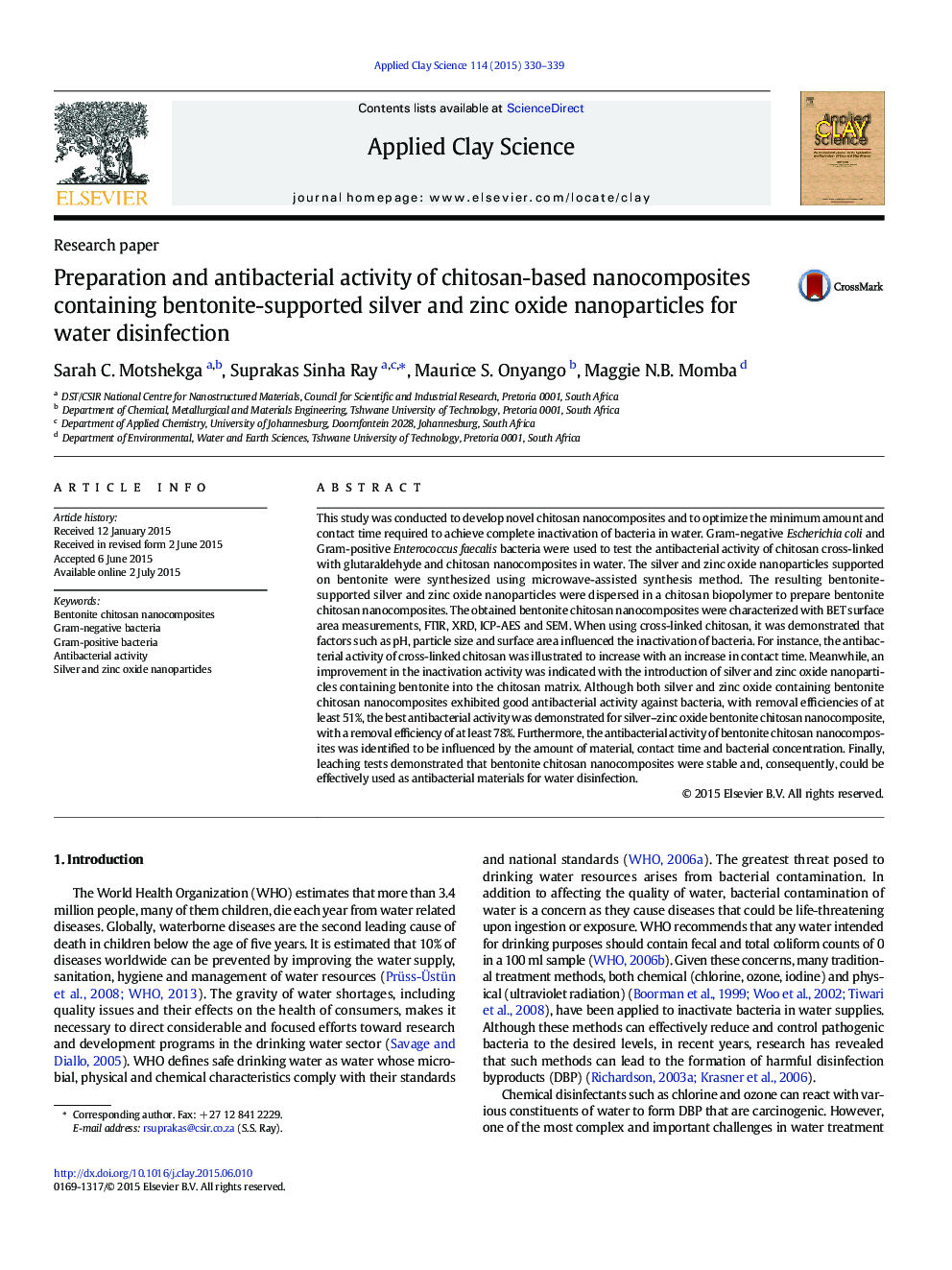| کد مقاله | کد نشریه | سال انتشار | مقاله انگلیسی | نسخه تمام متن |
|---|---|---|---|---|
| 1694384 | 1519067 | 2015 | 10 صفحه PDF | دانلود رایگان |
• Clay chitosan nanocomposites are promising antibacterial materials.
• The antibacterial activities of such nanocomposites are studied and discussed.
• The pH, loading and contact time are major factors in determining the efficacy.
• Ag and ZnO nanoparticles further improved antibacterial efficiency.
• Complete inactivation of the bacteria was observed in less than 60 min.
This study was conducted to develop novel chitosan nanocomposites and to optimize the minimum amount and contact time required to achieve complete inactivation of bacteria in water. Gram-negative Escherichia coli and Gram-positive Enterococcus faecalis bacteria were used to test the antibacterial activity of chitosan cross-linked with glutaraldehyde and chitosan nanocomposites in water. The silver and zinc oxide nanoparticles supported on bentonite were synthesized using microwave-assisted synthesis method. The resulting bentonite-supported silver and zinc oxide nanoparticles were dispersed in a chitosan biopolymer to prepare bentonite chitosan nanocomposites. The obtained bentonite chitosan nanocomposites were characterized with BET surface area measurements, FTIR, XRD, ICP-AES and SEM. When using cross-linked chitosan, it was demonstrated that factors such as pH, particle size and surface area influenced the inactivation of bacteria. For instance, the antibacterial activity of cross-linked chitosan was illustrated to increase with an increase in contact time. Meanwhile, an improvement in the inactivation activity was indicated with the introduction of silver and zinc oxide nanoparticles containing bentonite into the chitosan matrix. Although both silver and zinc oxide containing bentonite chitosan nanocomposites exhibited good antibacterial activity against bacteria, with removal efficiencies of at least 51%, the best antibacterial activity was demonstrated for silver–zinc oxide bentonite chitosan nanocomposite, with a removal efficiency of at least 78%. Furthermore, the antibacterial activity of bentonite chitosan nanocomposites was identified to be influenced by the amount of material, contact time and bacterial concentration. Finally, leaching tests demonstrated that bentonite chitosan nanocomposites were stable and, consequently, could be effectively used as antibacterial materials for water disinfection.
Figure optionsDownload as PowerPoint slide
Journal: Applied Clay Science - Volume 114, September 2015, Pages 330–339
